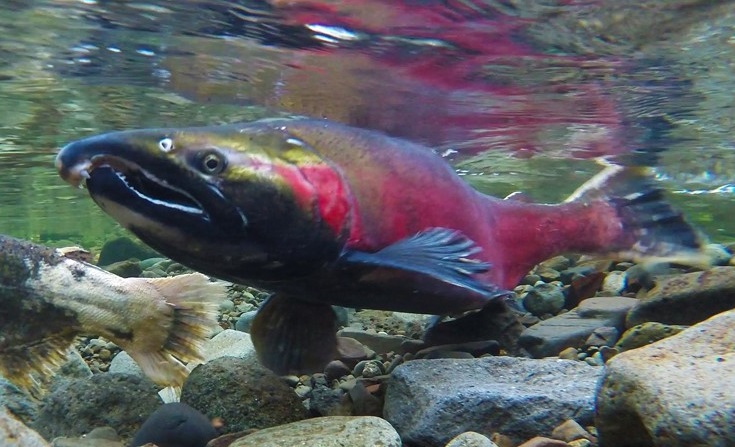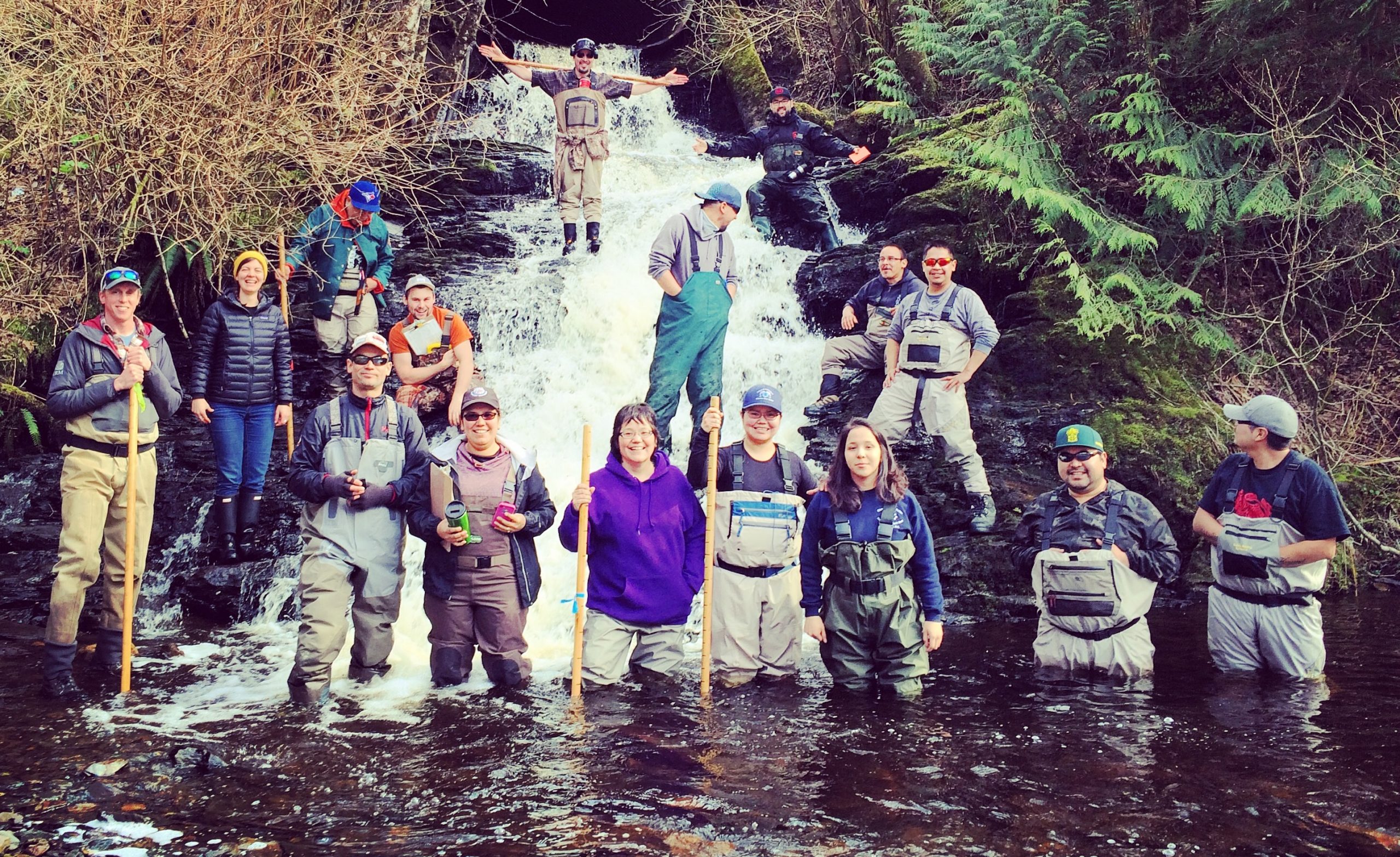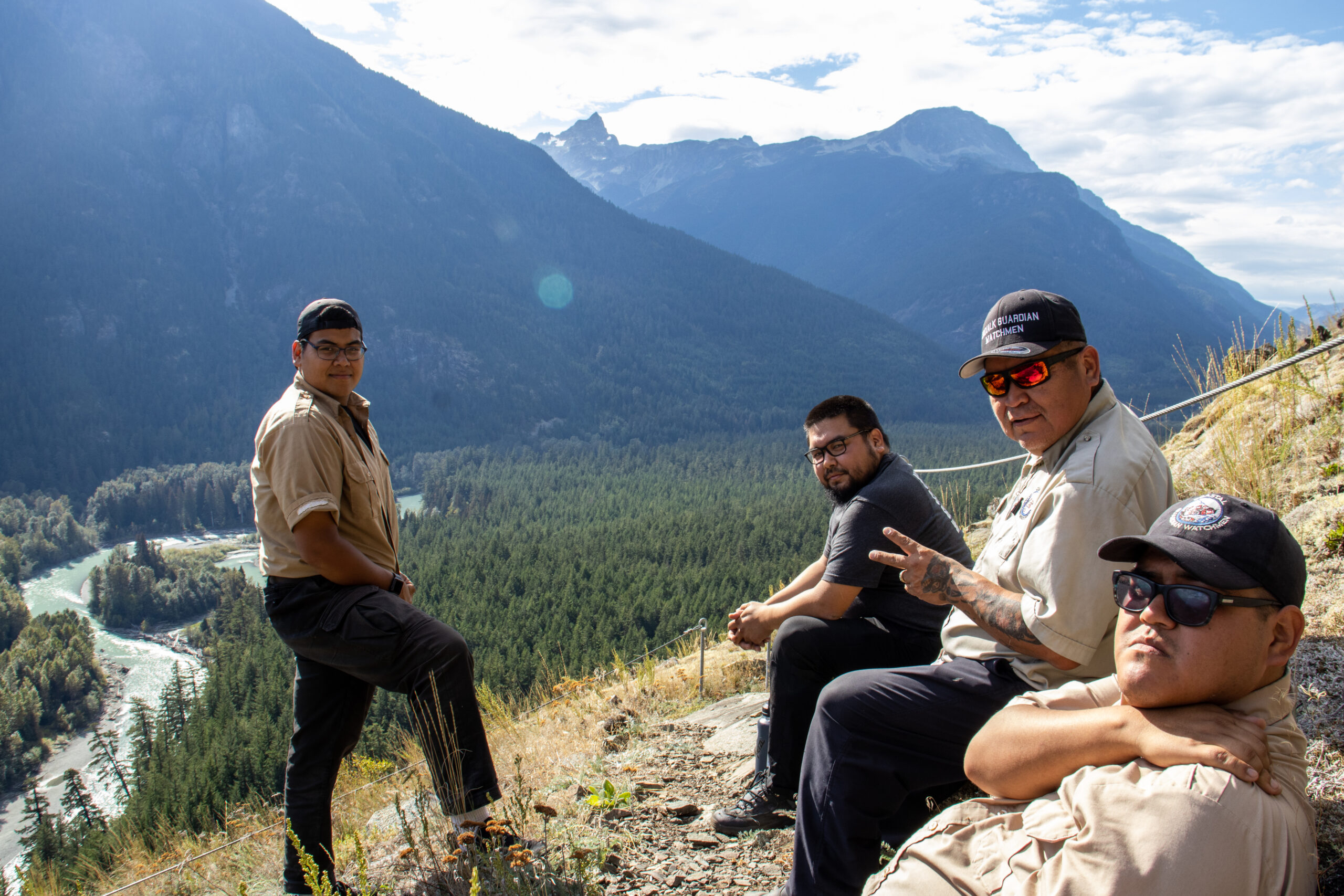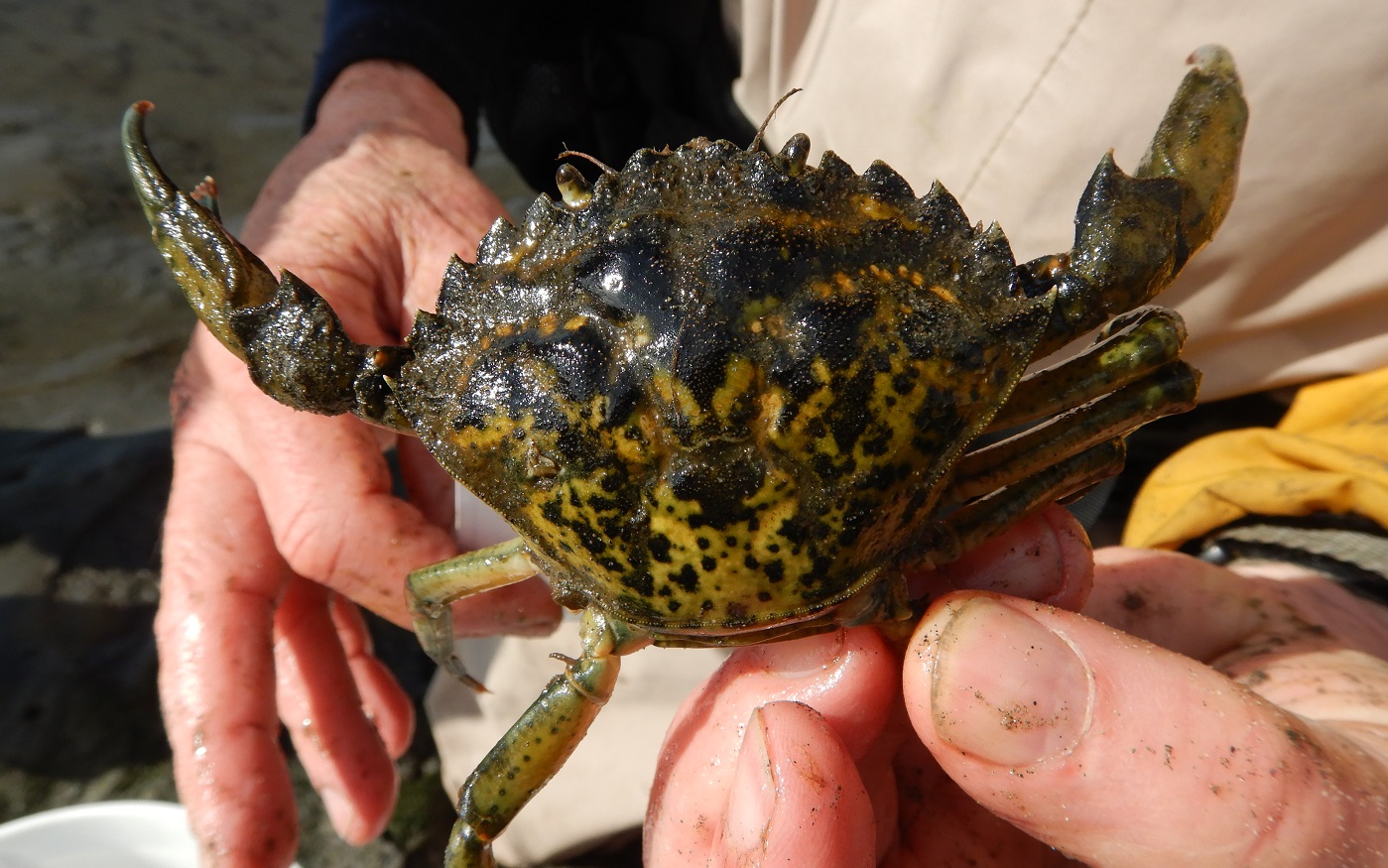Salmon are integral to the wellbeing of coastal ecosystems and communities, from feeding bears to nurturing forests and sustaining livelihoods, cultures, and traditions. An abundant and keystone species throughout the Great Bear Rainforest, salmon populations have been declining rapidly across the region.
Creekwalkers are the first key step in understanding the decline. They visit streams multiple times while salmon are spawning to count the fish and provide detailed assessments of the number of salmon that return to their natal streams. These assessments enable informed management decisions that are imperative in conserving wild salmon because “you can’t manage salmon populations if you don’t know how they’re doing.”
Despite the critical importance of creekwalkers, DFO has drastically cut funding towards monitoring in recent decades. On the North Coast, for example, there was once 150 creekwalkers, and now there are only two.
DFO has shifted to counting through aerial surveys and fish tagging at just a few sites in larger stream systems and modeling populations. The accuracy of theses estimates can be off by as much as 50 percent, and it does not show what is happening to individual populations.
Key points
- 60% = The percentage decline in DFO monitoring in the last 15 years
- <10% = The proportion of spawning streams on the Central and North Coast that are monitored
- Impact = Guardians are stepping up to take on creekwalker roles
Learn more about the benefits of Coastal Guardians
Download our Case for Investment final report: Coastal Guardian Watchmen: Stewarding the Coast for All (pdf).



